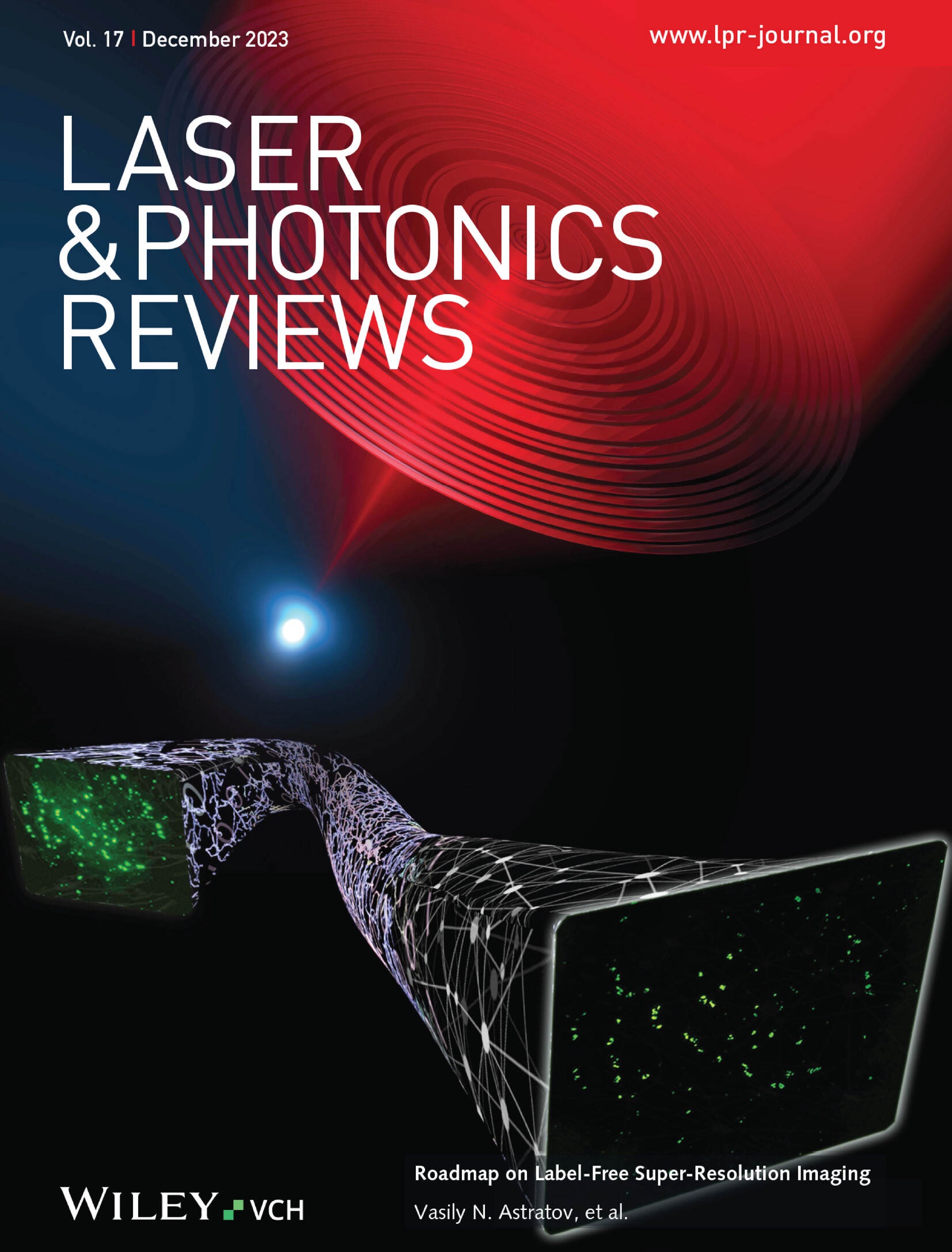压力调节Cs2WCl6在近红外- II窗口中的发射
IF 9.8
1区 物理与天体物理
Q1 OPTICS
引用次数: 0
摘要
第二近红外(NIR - II)荧光材料在生物医学成像和光学传感领域有着巨大的应用潜力。但由于波长短、光致发光效率低、发射光谱窄,限制了其应用。在这里,通过压力工程成功地实现了零d无铅空位有序双钙钛矿Cs2WCl6从第一个近红外(NIR‐I)区域到NIR‐II窗口的发射调谐。在施加外部压力后,观察到6.9倍的发射增强和高达227 nm的红移。压力增强了结构刚度,从而减少了电子-声子耦合,减少了非辐射损失,并优化了振动耦合d - d 1T2g/1Eg→3T1g跃迁的发射性能。在压力作用下,3T1g和1T2g/1Eg之间的能隙逐渐减小,W─Cl键收缩放大了晶体场分裂,多态发射平衡调制共同驱动了发射红移。这项工作证明了在NIR - II窗口中实现发射的强大压力策略,并为结构演变和光学性质之间的潜在机制提供了深入的见解。本文章由计算机程序翻译,如有差异,请以英文原文为准。
Pressure Modulates Emission of Cs2WCl6 in the NIR‐II Window
Second near‐infrared (NIR‐II) fluorescent materials hold great potential for a range of applications in biomedical imaging and optical sensing. Nonetheless, their application is limited by short wavelength, low photoluminescence efficiency, and narrow emission spectrum. Here, an emission tuning from the first near‐infrared (NIR‐I) region to the NIR‐II window in the 0D lead‐free vacancy‐ordered double perovskite Cs2 WCl6 is successfully achieved through pressure engineering. Upon application of external pressure, a 6.9‐fold emission enhancement and a redshift as large as 227 nm are observed. Pressure enhances structural rigidity, thereby reducing electron‐phonon coupling, reducing non‐radiative losses, and optimizing the emission performance of vibration‐coupled d‐d 1 T2g /1 Eg → 3 T1g 3 T1g 1 T2g /1 Eg
求助全文
通过发布文献求助,成功后即可免费获取论文全文。
去求助
来源期刊
CiteScore
14.20
自引率
5.50%
发文量
314
审稿时长
2 months
期刊介绍:
Laser & Photonics Reviews is a reputable journal that publishes high-quality Reviews, original Research Articles, and Perspectives in the field of photonics and optics. It covers both theoretical and experimental aspects, including recent groundbreaking research, specific advancements, and innovative applications.
As evidence of its impact and recognition, Laser & Photonics Reviews boasts a remarkable 2022 Impact Factor of 11.0, according to the Journal Citation Reports from Clarivate Analytics (2023). Moreover, it holds impressive rankings in the InCites Journal Citation Reports: in 2021, it was ranked 6th out of 101 in the field of Optics, 15th out of 161 in Applied Physics, and 12th out of 69 in Condensed Matter Physics.
The journal uses the ISSN numbers 1863-8880 for print and 1863-8899 for online publications.

 求助内容:
求助内容: 应助结果提醒方式:
应助结果提醒方式:


